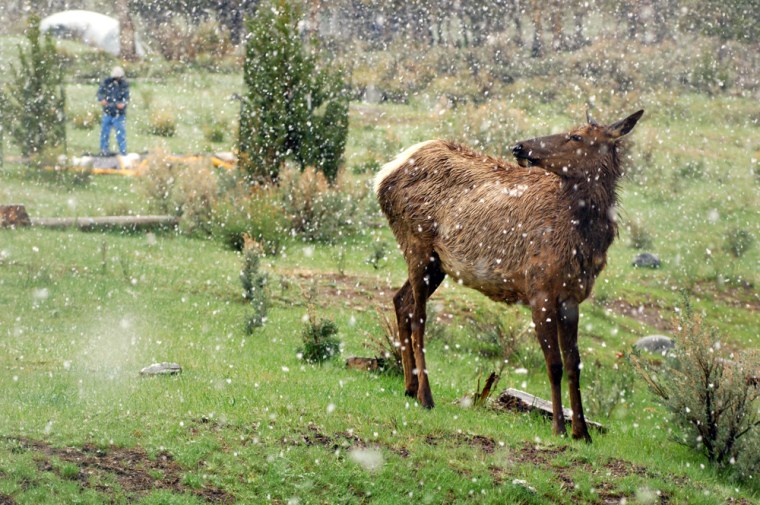Five conservation groups have asked a federal court to stop the artificial feeding of elk on Wyoming's National Elk Refuge.
By feeding thousands of wild elk, the U.S. Fish and Wildlife Service has turned the 25,000-acre refuge into a breeding ground for diseases harmful to wildlife and livestock, the groups claimed in a lawsuit filed Tuesday.
The lawsuit challenges a 2007 management plan for the refuge that continued the feeding despite its potential risk. It claims the government is violating its mandate to protect and improve refuge habitat.
"Continued feeding on the refuge will maintain ideal conditions for transmission of brucellosis," the lawsuit states, "and also is highly likely to invite a devastating outbreak of lethal chronic wasting disease — the elk equivalent of `mad cow' disease."
Brucellosis can cause pregnant animals to prematurely abort their young. Chronic wasting disease is a neurological sickness that can be fatal to elk, moose and deer.
Last winter, an estimated 8,300 elk and 920 bison consumed more than 8.4 million pounds of alfalfa pellets at the refuge near Jackson, Wyo., said the facility's manager, Steve Kallin. That's the equivalent of 175 semitrailer loads of feed.
Refuge slowly reducing amounts
Kallin declined to comment on specifics of the lawsuit, but he said the 2007 plan called for the refuge to reduce feeding over time.
The practice dates to the early 1900s, when homesteaders began feeding elk to keep them from starving after much of the natural forage in the area was consumed by newly introduced cattle herds.
Despite growing awareness of the increased risk of disease transmission when the animals congregate, artificial feeding has continued at the refuge under pressure from hunting groups.
Bob Wharff, executive director of Wyoming Sportsmen for Fish and Wildlife, said an abrupt end to feeding could have negative consequences.
"There comes a point where you don't feed them and they get to a weakened state. They'd get far more susceptible (to disease)," he said.
Wharff said a study done for his organization several years ago indicated elk populations would decline by 60 to 80 percent if feeding stopped.
"I don't think anybody is going to sit back and let them all starve to death," he added.
Bison attracted to feed
The feeding grounds also inadvertently attract hundreds of bison every winter from Grand Teton National Park. That led to a hunt last winter in which 266 bison were killed to stave off damage caused when the animals trample the landscape.
Kallin said irrigation systems are being built and natural habitat restored to increase forage. Also, increased hunting will be used to trim the elk population to about 5,000 animals, while the bison population is to be reduced by up to 700 animals.
"It's a complex situation," Kallin said. "The existing plan recognizes a potential for disease, and it addresses that in the plan."
The lawsuit was filed in U.S. District Court in Washington, D.C., by Defenders of Wildlife, Jackson Hole Conservation Alliance, National Wildlife Refuge Association, Greater Yellowstone Coalition and the Wyoming Outdoor Council.
